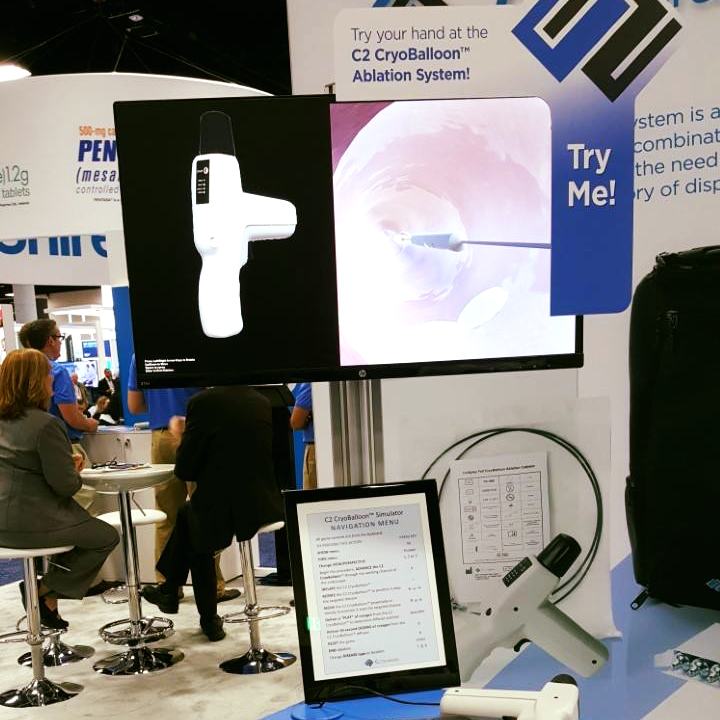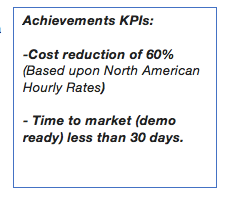
“I leave for San Diego in 48 hours. It’s getting down to the wire for our game/app to be ready for use at Digestive Disease Week”. Lisa from C2Therapeutics.
Few weeks prior to this conversation, we received a request where C2Therapeutics was planning to showcase their new C2 CryoBalloon Ablation System at San Diego Digestive Disease Week. The system is intended for use as a cryosurgical tool in the field of general surgery, specifically for endoscopic applications, to include ablation of Barrett’s esophagus with dysplasia.
Their Goal
They wanted to develop an interactive demo or video that would help visitors interact with their device and get to know about the features.
Since the device is an innovation in its field, so they wanted to capture the usability of the device in the best manner possible.
Our Solution

We suggested Gamification for the whole experience. The idea was to get the customers to interact with the product and get to see its features in action. Also having an interactive game would make their demo stand out from the crowd.
Why Game and not a Video?
One of the major difficulty was in the capturing of the device working once the device is in the body. One way out was to make the animated video, but that limited the buyers’ ability to interact with the device and see its performance in action. So, that why we suggested gamification/simulation. This enabled C2Therapeutics booth visitors to easily interact with the device and get the feel of the device in action.
What we brought to the table
We had the resources (designer, developers, and artists) that can capture the idea and present it in a simple interactive game that is easy for users to play and interact with.
Accurate 3D modeling of the device, responsiveness of the simulation, multiple angles to view and play the game, were some of the features that we designed and planned for.
The Process: Design, Develop, and Deploy
The process started with getting as much info for the product as possible. Most of the info gathered was about the device operational capabilities. We went through the device technical specs and literature to make sure that we capture even the minutest detail of the device and its working.
The hard part of the game simulation was to get the working of the device inside the body right. For that, we had to simulate internal esophagus with the diseased area and the device operations in action.
We also came up with the idea of looking at the interactive simulation with different cameras and angles. This meant that the users could select any view from the side, in the center, and get the understanding of the device working.
For better user experience, we captured the device operation in full along with the internal body simulation. So, when a user is playing with the device, both the device and internal operations are visible.
Once the concept was approved, we had to choose the right tools and platforms that can be easily extended to different platforms. To accomplish this, we chose the tools like Maya and Unity 3D.
Output and Achievements
The following message pretty much summarises the whole experience.
“We are back from Digestive Disease Week in San Diego, California. All went well and this kiosk playing your game/application worked really well”.
If you want your product demo to make an impact, do contact us. App2Dev.com